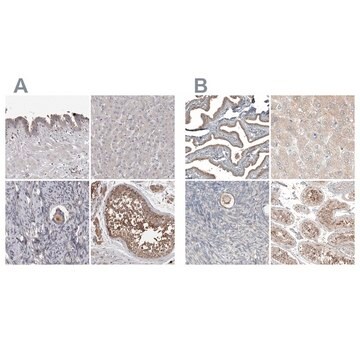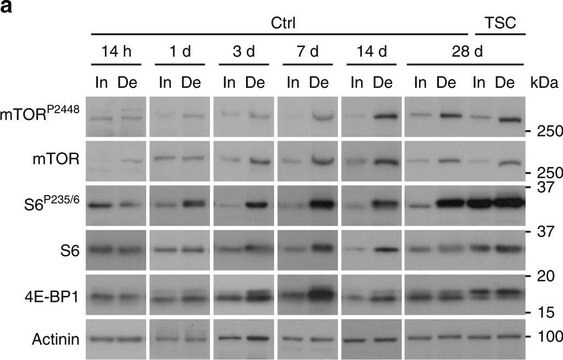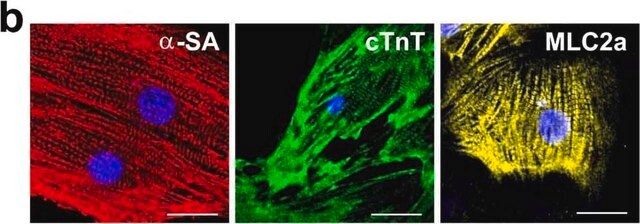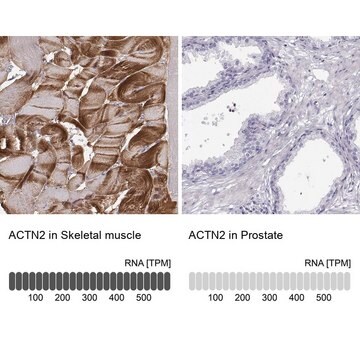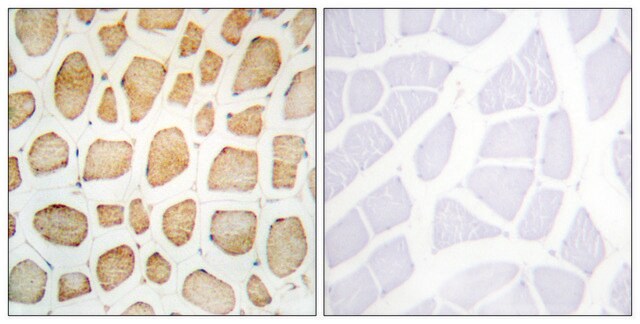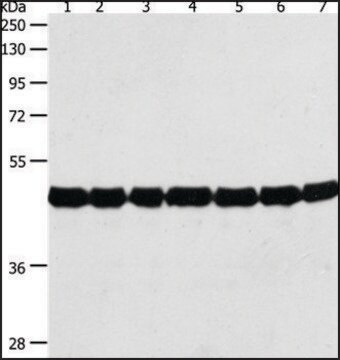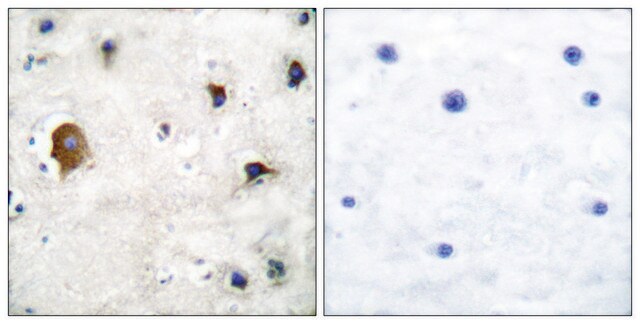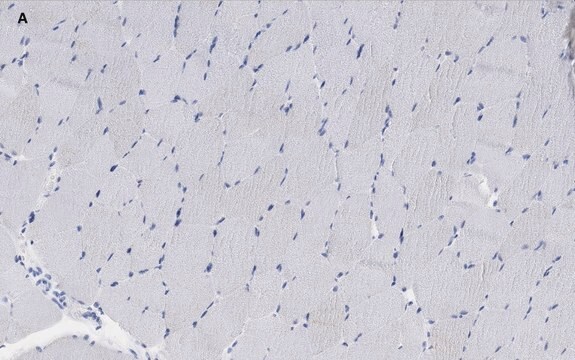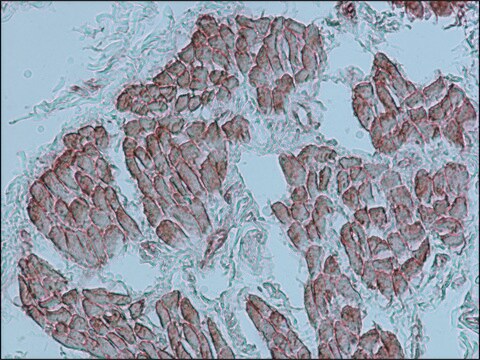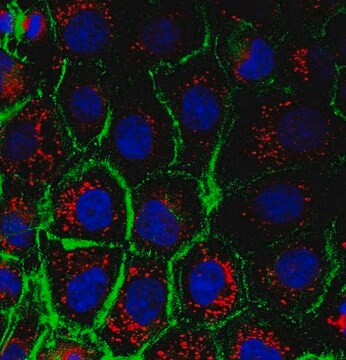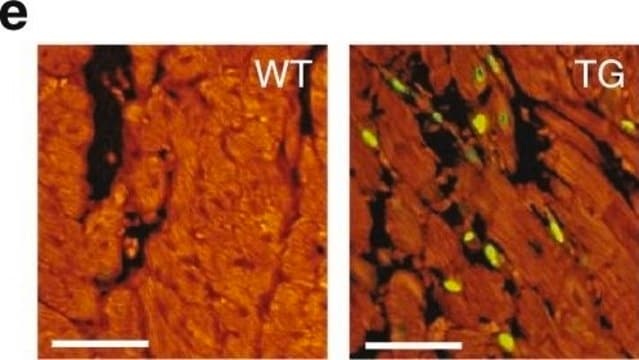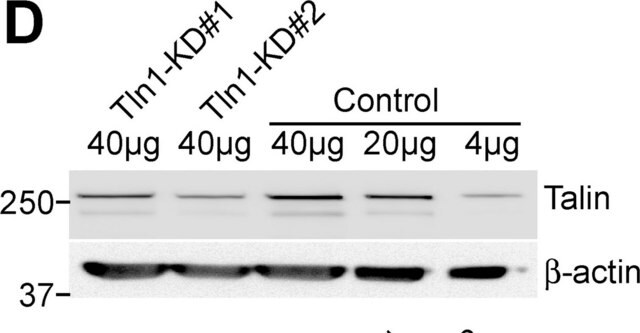Wichtige Dokumente
A2543
Anti-α-Actinin antibody produced in rabbit
whole antiserum
Synonym(e):
Anti-CMD1AA, Anti-CMH23, Anti-MPD6, Anti-MYOCOZ
About This Item
Empfohlene Produkte
Biologische Quelle
rabbit
Konjugat
unconjugated
Antikörperform
whole antiserum
Antikörper-Produkttyp
primary antibodies
Klon
polyclonal
Enthält
15 mM sodium azide
Speziesreaktivität
chicken
Methode(n)
indirect immunofluorescence: 1:500 using cultured chicken fibroblasts
western blot: suitable using cultured cells and chicken gizzard extract
Versandbedingung
dry ice
Lagertemp.
−20°C
Posttranslationale Modifikation Target
unmodified
Angaben zum Gen
chicken ... ACTN2(396263) , ACTN4(396024)
Allgemeine Beschreibung
Spezifität
Immunogen
Anwendung
- co-immunoprecipitation studies
- immunoblotting studies
- immunofluorescence
Biochem./physiol. Wirkung
Physikalische Form
Lagerung und Haltbarkeit
Haftungsausschluss
Sie haben nicht das passende Produkt gefunden?
Probieren Sie unser Produkt-Auswahlhilfe. aus.
Lagerklassenschlüssel
10 - Combustible liquids
WGK
WGK 3
Flammpunkt (°F)
Not applicable
Flammpunkt (°C)
Not applicable
Hier finden Sie alle aktuellen Versionen:
Besitzen Sie dieses Produkt bereits?
In der Dokumentenbibliothek finden Sie die Dokumentation zu den Produkten, die Sie kürzlich erworben haben.
Kunden haben sich ebenfalls angesehen
Unser Team von Wissenschaftlern verfügt über Erfahrung in allen Forschungsbereichen einschließlich Life Science, Materialwissenschaften, chemischer Synthese, Chromatographie, Analytik und vielen mehr..
Setzen Sie sich mit dem technischen Dienst in Verbindung.
